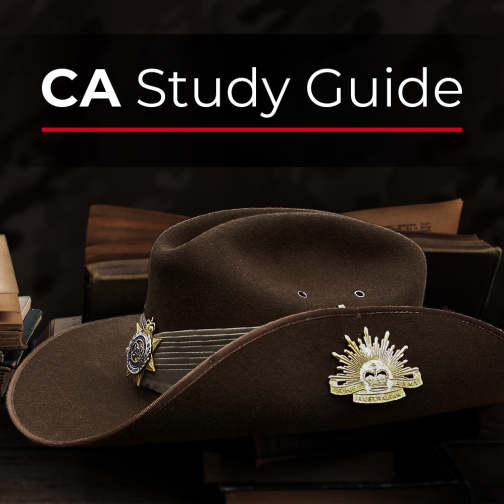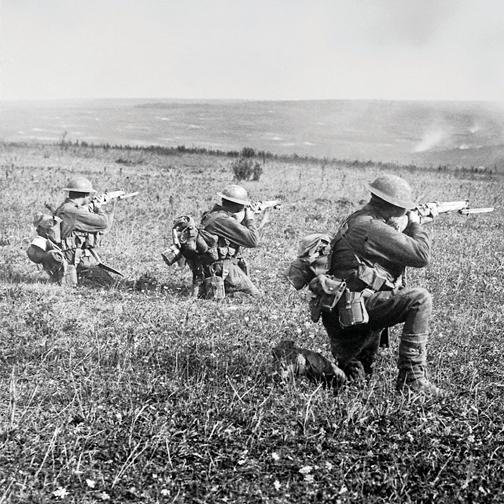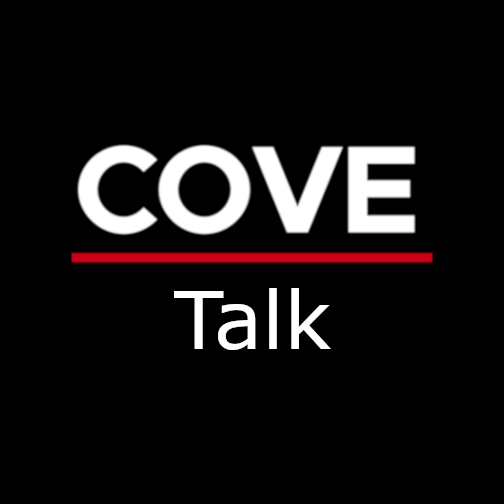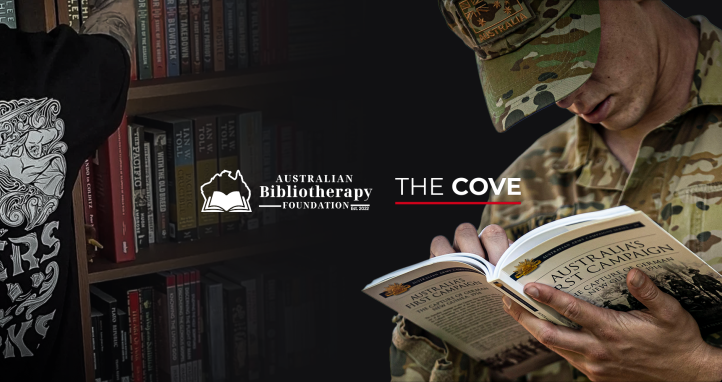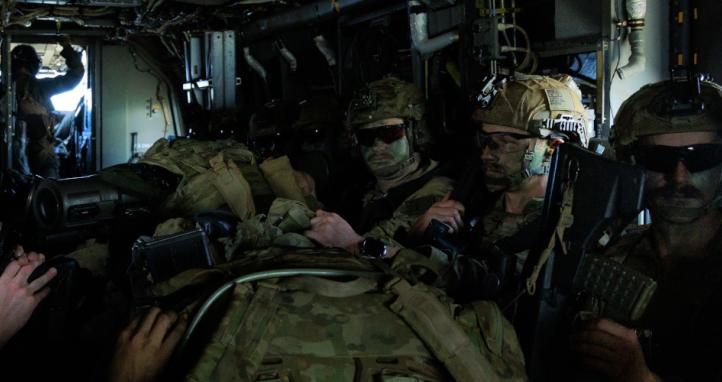Medical interoperability in the deployed environment is vital to the health capability of allied nations (Hamlin 2022). What proves pivotal in enacting this function is the ability of said nations to read from a common playbook. It is the writer’s experience that preconceived and often incorrect interpretations of doctrinal definitions (NATO 1997) can hinder the understanding of true capability, especially in the health planning phase. What will follow is an opinion piece exploring select nuances between different nations’ capability definitions using the vignette of an international, multi-national exercise (Jakarta 2023), and how this can cause confusion.
For background, an Australian health battalion was tasked with providing a Role 1 treatment team and two integral medical technicians to provide medical support to a dismounted infantry platoon and a tank squadron. The exercise involved multiple other nations, each with their own health support, but for the purpose of this comparison the U.S. Role 2 facility and their accompanying integral medics supporting the U.S contingent will be the focus.
Doctrinally, the Australian treatment team consists of one medical officer (MO), one nursing officer (NO), and three treatment team medical technicians (MT). The function is to provide basic primary health care, specialised first aid, triage, resuscitation, stabilisation, and preparation for casualty evacuation – as per the function of a Role 1 (ADDP 1.2 2016).
Conversely, one emergency physician, one physician assistant, and six health care specialists (the equivalent of medical technicians) make up a U.S. medical treatment squad (MTS) (ATP 4-02.6 2022). Based on the size of the dependency, the number of MTS may increase to four, with additional auxiliary squads added on to boost capability. It is the personnel from these squads that staff the Role 2, and in turn dictate its capability.
In this exercise, selected personnel from these auxiliary squads augmented to extend the medical care capability. Namely, from the area support squad, a medical laboratory specialist and a radiology specialist – both enlisted ranks – enabled both imaging with X-ray and basic blood testing with i-STAT capability (Abbott 2023).
The patient holding squad provides a ward nurse, who is also required as part of the resuscitation team, as no dedicated physician assistant is present as per doctrine (ATP 4-02.6 2022). To round out the staffing, the Role 2 includes a behavioural health specialist and environmental health officer from the mental health and preventative medicine squads respectively.
Examining the function of each individual is vital in determining the capability of the team as a whole, the capability of the individual to perform the role that they are deployed to do, and arguably more importantly: the role that they are statistically likely to perform. Given the estimates of disease and non-battle injuries (DNBI) are upwards of 75% in the modern era (Belmont Jr 2010), a solid foundation of primary health care (PHC) is vital to ensure force health protection.
This function is best overseen and enabled by the MO and enacted by the medical technicians. Importantly, the medics integrated into the combat elements are required to diagnose, treat, and manage primary healthcare complaints for potentially extended periods with limited oversight by the MO, cementing the requirement for a sound basis in PHC.
The Australian medical technician undergoes a 76-week training program at the Army School of Health, during which time they complete concurrently a civilian enrolled nursing diploma, alongside military specific proficiencies such as tactical combat casualty care (TCCC) (ADF Careers 2023). The combination of these qualifications provides a comparatively wide scope of practice, including, but not limited to, the ability to give medications, assist senior clinicians in complex airway management, and simple suturing techniques.
With the addition of the ‘Authority to Carry’ endorsement, integral medics are able to carry and administer schedule 8 medications for the management of severe, acute pain without the requirement for initial MO approval, expediting treatment for wounded soldiers in a deployed environment.
The U.S. combat medic specialist undergoes a 16-week training program (CMSTP), which focuses on basic life support, minor acute care, limited primary care, and extensive TCCC. The governing training organisation has the capacity to train 6000 combat medics annually – certifying them to the national standard of an Emergency Medical Technician (EMT) (METC 2023). Completing a training program that is 60 weeks shorter than their Australian counterparts, and no civilian nursing qualification, the capacity and opportunity to cover the breadth and depth of what makes up primary health care is drastically reduced.
The medical laboratory specialist and the radiology specialist provided additional capability to the U.S. Role 2. In this reduced footprint iteration, the laboratory capability was in the form of i-STAT, which theoretically may be carried by the Role 1. The key consideration is that cold chain must be maintained in order to ensure the cartridges required can be used.
Any clinician, however, may use the i-STAT device with minimal extra training, so long as a MO is available to interpret the results. The portable X-ray function provides a critical capability in being able to instantly diagnose fractures and prevent back loading purely for imaging, potentially allowing soldiers to remain in the field. The size and weight of X-ray capability is currently prohibitive for Role 1 use; however, advances in technology may see this change in the near future, with platforms as light as 9kg commercially available (OR Technology 2023).
Doctrinally, a common function of both the Role 1 and Role 2 is to provide MO-led resuscitation (ADDP 1.2 2016). The sticking point is when it comes to damage-control surgery, with the greatest discrepancy between the NATO definition and U.S. Army doctrine. As per the NATO Standard Allied Joint Doctrine for Medical Support (AJP-4.10 2019), the Role 2 ‘encompasses a set of military health care capabilities which enhances the resuscitative spectrum of the role 1 by capabilities essential to preserve life, limb, and function and stabilize the patients’ condition for further transport and treatment’ with all three iterations – forward, basic, and enhanced – dictating a surgical capability (AJP-4.10 2019).
In direct contradiction to this, as outlined in U.S. Army Doctrine The Medical Company (Role 2) (ATP 4-02.6 2022), this interpretation is openly rejected, professing that surgical capability is not mandatory at this role. At its core, the Role 2 purely duplicates the Role 1 and expands services available by adding dental, laboratory, X-ray, and patient holding capabilities. Furthermore, no clarifying post-nominal (basic, light manoeuvre, echo, etc) is provided to delineate the capability of the specific version of a Role 2 being provided to any given exercise, operation, or deployment.
As stated in AJP 4.10, the main function of the Role 2 is to provide enhanced resuscitative capability. Arguably, this relies more on the staffing of the Role 2 than the additional auxiliaries provided, that by definition transform the Role 1 into a Role 2. For example, a single MTS Role 2 that provides a single MO arguably cannot provide any greater resuscitative capability over an Australian Role 1 treatment team, besides perhaps the extra clinical expertise provided by the emergency medicine specialist. However, when considering the ability for simultaneous resuscitative ability in a MASCAS, this would prove difficult without more than one MO, or experienced critical care nursing officer.
The ability to hold multiple battlefield or non-battlefield casualties for a prolonged time is not, by definition, a function of the Role 1, though it can be achieved with low acuity casualties, if required. The limitations lie in the staffing of the holding team, though arguably more in the resupply of consumables such as medications, oxygen, and intravenous fluids.
In the case of this exercise, the six medics provided by the U.S. Role 2 compared with the three from the Australian Role 1 could provide marginally greater holding capability given an adequately sized holding area. However, without sound logistics to provide class VIII resupply, this is arguably the rate-limiting step.
The primary takeaway for the team on the ground is that greater appreciation of the discrepancies of allied nation’s doctrinal definitions is required. Further, often the incorrect promulgation and interpretation of said definitions is what generates much of this confusion.
Although not always plausible on a large-scale operation, what the writer believes to be best practice is a clinician-to-clinician discussion regarding the realistic capability of the provided health support, as the nuances are prone to being lost in translation when relayed through non-clinicians or pre-deployment briefings. Or if in doubt, read the ESD.
References
ADF Careers, www.adfcareers.gov.au. (n.d.). Medic. [online] Available at: https://www.adfcareers.gov.au/jobs/army/medic [Accessed 10 Sep. 2023].
Army Medicine showcases interoperability during Rim of the Pacific 2022 n.d., www.army.mil, viewed 10 September 2023, <https://www.army.mil
/article/259369/army_medicine_showcases_interoperability_during_rim_of_the_pacific_2022>.
AJP-4.10 ALLIED JOINT DOCTRINE FOR MEDICAL SUPPORT. (2019). NATO Standard, [online] Edition C (Version 1). [Accessed 10 Sep. 2023].
Belmont Jr, L.P.J. ed., (2010). Disease and Nonbattle Injuries Sustained by a U.S. Army Brigade Combat Team During Operation Iraqi Freedom. MILITARY MEDICINE, [online] 175(7:469), pp.469–476. Available at: https://academic.oup.com/
milmed/article/175/7/469/4344629%20by%20PIA [Accessed 10 Sep. 2023].
Jakarta, U.S.E. (2023). Senior U.S. and Indonesian Military Leaders Launch Super Garuda Shield 2023. [online] U.S. Embassy & Consulates in Indonesia. Available at: https://id.usembassy.gov/senior-u-s-and-indonesian-military-leaders-lau… [Accessed 10 Sep. 2023].
Global Point of Care, www.globalpointofcare.abbott. (n.d.). i-STAT 1. [online] Available at: https://www.globalpointofcare.abbott/us/en/product-details/apoc/i-stat-….
Health Support to Operations. (2016). ADDP 1.2, 3, pp.1B2.
METC, www.metc.mil. (n.d.). Combat Medic Specialist Training Program. [online] Available at: https://www.metc.mil/Academics/Programs/Combat-Medic-Specialist-Trainin….
NATO Logistics Handbook: Chapter 16: Medical Support. [online] Available at: https://www.nato.int/docu/logi-en/1997/lo-1610.htm.
Or-technology, www.or-technology.com. (n.d.). Portable X-ray backpack for military emergency medical services. [online] Available at: https://www.or-technology.com/en/products/military/leonardo-dr-nano.html.
The Medical Company (Role 2). (2022). ATP 4-02.6.

